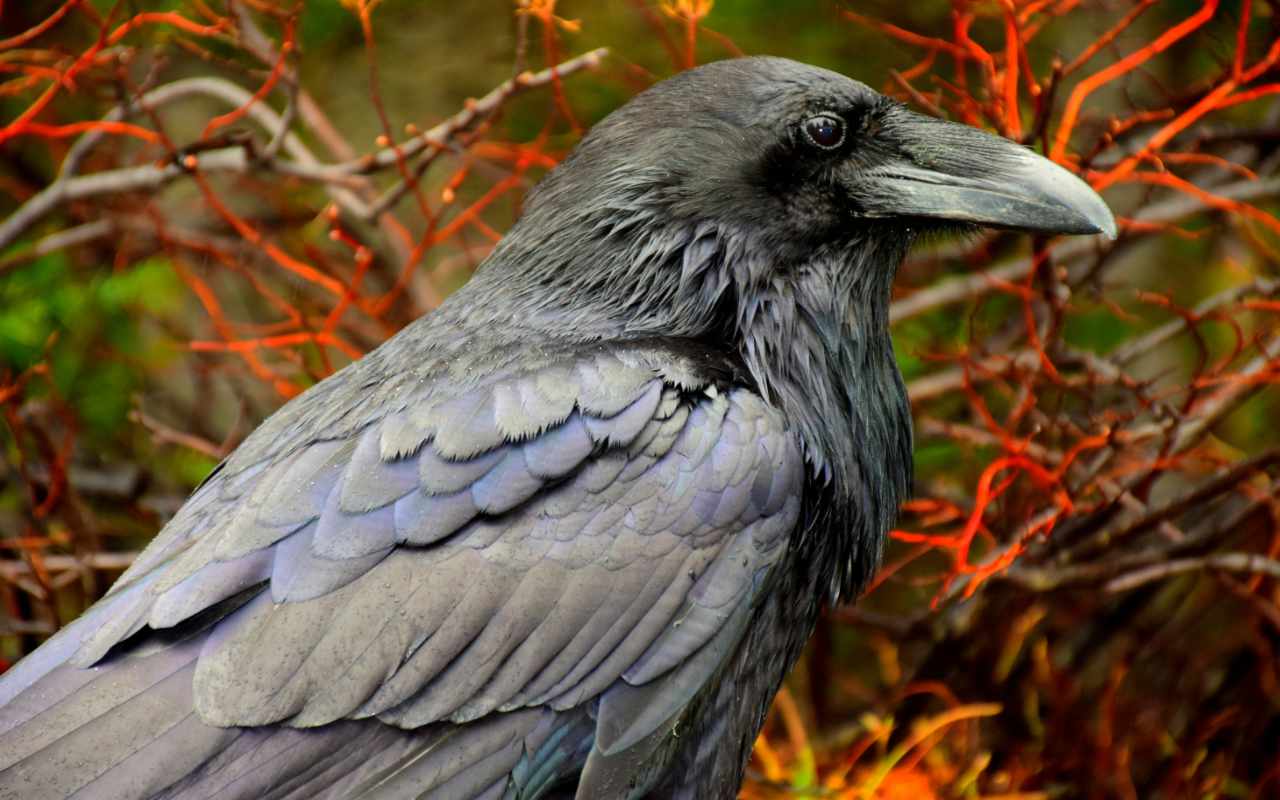HEADTURNED Articles
Celebrating Corvids: Nature's Intelligent Guardians
Discover the World of Corvids
Understanding and Supporting the Corvid Family
Introduction
The term Corvid refers to a family of birds known as Corvidae, deriving from the Latin word corvus, meaning raven. This remarkable family encompasses a variety of highly intelligent and socially complex species, including crows, ravens, magpies, and jays. These birds are found globally, excluding Antarctica, and are celebrated for their problem-solving skills and adaptability. Yet, their populations have been facing significant challenges. This article explores the world of Corvids, their unique traits, the decline in their numbers, and ways to support their continued survival.

Understanding and Supporting the Corvid Family
Birds of the Corvid Family
- Crow: Crows are highly adaptable birds found worldwide. Known for their intelligence, they use tools, recognise human faces, and exhibit problem-solving skills.
- Raven: Larger than crows, ravens are majestic birds associated with mythology. They are curious, playful, and capable of mimicking sounds, including human speech.
- Magpie: Magpies are strikingly beautiful birds with black-and-white plumage. Known for their curiosity, they are one of the few species that recognize themselves in mirrors.
- Jay: Jays are colourful members of the Corvid family. They are excellent mimics and play a crucial role in forest regeneration by dispersing seeds.
- Rook: Rooks resemble crows but are distinguished by their bare grey-white skin around the base of their beaks. They are highly social and often seen in large colonies.
- Jackdaw: Smaller than crows, jackdaws have a distinctive silvery sheen to their feathers and pale eyes. They are known for their playful and social nature.
- Chough: Choughs are agile fliers with glossy black feathers and bright red beaks and legs. They prefer coastal cliffs and mountainous areas.
Understanding and Supporting the Corvid Family
The Crow
Insight into Adaptability
Habits and Intelligence
Crows are omnivorous birds with an unmatched ability to thrive in diverse habitats, from urban areas to dense forests. Their intelligence is evident in their use of tools, complex problem-solving, and ability to recognise and remember human faces.
Breeding Cycle and Social Behavior
Crows form monogamous pairs, meaning they have a single mate for life or a long duration, and collaborate to build nests in high locations. Both parents care for their young, demonstrating strong family bonds and protective instincts.
Diet and Communication
Crows have a varied diet, including insects, seeds, and carrion. Their vocalisations are diverse and used to convey warnings, identify individuals, and signal food sources to others.
Understanding and Supporting the Corvid Family
The Raven
A Symbol of Mystery
Unique Characteristics and Behavior
Ravens are the largest Corvids and are recognized for their soaring flight and deep croaking calls. They are playful and curious, often engaging in aerial acrobatics.
Mating and Nesting
Ravens mate for life and build large, sturdy nests. They are attentive parents, fiercely guarding their chicks from predators and environmental threats.
Diet and Role in Ecosystems
As scavengers, ravens play a vital role in cleaning ecosystems. They consume carrion and organic waste, helping to recycle nutrients into the environment.
Understanding and Supporting the Corvid Family
The Magpie
A Mischievous Beauty
Recognition and Intelligence
Magpies are among the most intelligent birds, capable of recognising themselves in mirrors—a trait indicative of self-awareness.
Social Structures
Magpies live in territorial groups and are highly vocal, communicating with a range of calls to maintain social cohesion.
Ecological Importance
Their diet of insects and small animals helps control pest populations, while their scavenging aids in cleaning their habitats.
Understanding and Supporting the Corvid Family
Corvid Decline Over the Last 50 Years
Over the past five decades, Corvid populations have faced alarming declines due to habitat loss, pollution, and persecution. Urbanisation has fragmented their natural habitats, reducing nesting and foraging areas. This encroachment deprives Corvids of essential resources, forcing them to adapt to urban environments where risks of human-wildlife conflict are higher. Additionally, the destruction of forests and open spaces diminishes opportunities for breeding and shelter, exacerbating population pressures.
Agricultural practices reliant on chemical pesticides have drastically impacted Corvids. These substances poison the insects and seeds they consume, indirectly harming their health and reproductive success. Monoculture farming further reduces biodiversity, depriving these birds of varied food sources. Traditional agricultural landscapes that once supported diverse ecosystems have been replaced by industrial-scale farming practices.
Social misconceptions about Corvids as nuisances or pests have also led to extensive culling in many regions. Persecuted for their scavenging behaviour and misunderstood habits, these intelligent birds are unfairly targeted despite their ecological importance. Adding to these challenges, climate change continues to alter ecosystems, shifting food availability and disrupting breeding cycles. Rising temperatures and changing weather patterns result in fewer suitable nesting areas and unpredictable food sources, threatening Corvid survival further.
Understanding and Supporting the Corvid Family
Educating the Public
Reviving Corvid Populations
Using Technology for Awareness
Interactive apps, virtual reality experiences, and educational games can revolutionise how we perceive Corvids. These tools can simulate the birds' daily lives, showcasing their intelligence, social structures, and contributions to ecosystems. By engaging users in immersive experiences, we can build empathy and understanding for these remarkable creatures. Social media campaigns, supported by striking visuals and stories, can further amplify awareness about the need to protect Corvid populations.
Community Programs and Public Science
Workshops and public science initiatives play a crucial role in protecting Corvids. These programs encourage local communities to participate in activities such as nest monitoring, recording sightings, and habitat restoration. Through these efforts, individuals can gain hands-on experience and appreciation for Corvids' ecological roles. Schools, parks, and community centres can host events to educate the public about creating bird-friendly spaces in urban and suburban settings.
Inspiring the Next Generation
Incorporating Corvid conservation into educational curriculums can inspire young minds to become advocates for biodiversity. Field trips to nature reserves or bird sanctuaries allow children to observe Corvids in their natural habitats, fostering a sense of connection. Educational videos, books, and interactive resources tailored for different age groups can demystify Corvid behaviour and their environmental significance. By nurturing curiosity and respect, we can ensure future generations champion the preservation of these intelligent birds.
Understanding and Supporting the Corvid Family
Corvids: Misunderstood and Misrepresented
Corvids are often unfairly labelled as vermin or pests, a reputation that undermines their true ecological value. These birds play indispensable roles in maintaining ecosystem health, acting as seed dispersers, scavengers, and pest controllers. Their ability to clean up carrion and waste prevents the spread of disease, making them natural custodians of the environment.
Despite these benefits, myths and misconceptions about Corvid behaviour persist. For instance, their scavenging habits are often mistaken for malicious intent, leading to unjust culling and habitat destruction. Public awareness campaigns can combat these prejudices by highlighting their intelligence and positive contributions. Documentaries, articles, and local talks featuring experts can help shift perspectives and foster a more balanced understanding.
Creating bird-friendly spaces is another effective way to support Corvid populations. Gardens with native plants, water sources, and sheltering trees provide essential resources for nesting and foraging. Installing nest boxes tailored to different Corvid species can further enhance their survival chances. Community-led efforts to preserve open spaces and urban green areas ensure these birds have access to habitats crucial for their well-being.
Understanding and Supporting the Corvid Family
Call to Action
Safeguarding Corvids for the Future
Corvids are invaluable members of the natural world, deserving of admiration and protection. By advocating for habitat preservation, supporting conservation initiatives, and spreading awareness, we can ensure their survival for generations to come. Join the movement to celebrate and safeguard these intelligent birds—a legacy worth leaving behind.
Action Steps:
- Create Corvid-Friendly Habitats: Support these birds by planting native vegetation, ensuring access to water, and providing nesting areas. Simple actions can significantly impact their survival.
- Participate in Public Science: Engage in local projects like bird counts and habitat restoration. Your observations contribute valuable data for Corvid conservation efforts.
- Spread Awareness: Share knowledge about Corvids' ecological roles through social media, community talks, or by supporting educational campaigns. Challenge misconceptions and celebrate their intelligence.
- Advocate for Policy Changes: Encourage local and national authorities to implement laws protecting Corvid habitats and restricting harmful practices like excessive pesticide use.
- Volunteer or Donate: Support organisations dedicated to bird conservation. Your contributions can fund vital research and initiatives that protect Corvid populations.
- Educate the Next Generation: Inspire children to appreciate Corvids through engaging resources and activities. Foster a culture of respect and curiosity for nature's wonders.
